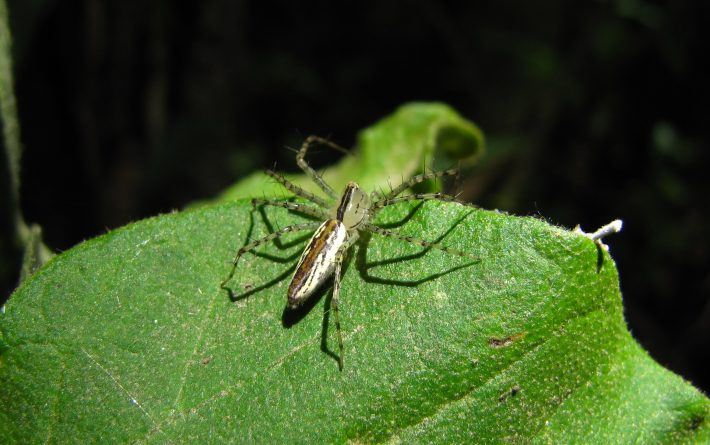The multiple benefits of conserving native forest
Instituto Multidisciplinario de Biología Vegetal (IMBIV-CONICET-UNC) press release
The Spanish version of this press release is available here.
Research published in Journal of Applied Ecology shows how the presence of Chaco Serrano forest remnants in the vicinity of soybean fields has led to an increase in the diversity of insects that control pests. This translates into lower herbivory and higher yield in soybean plants.
Researchers from the Multidisciplinary Institute of Plant Biology (IMBIV-CONICET-UNC, Argentina), in collaboration with colleagues from the United States and the Czech Republic, studied how, despite high deforestation rates in recent decades, the native forest in the province of Córdoba (Argentina), can benefit both biodiversity conservation and production. The work was recently published in Journal of Applied Ecology.

The loss of natural environments is one of the greatest threats to biodiversity globally. In Córdoba, deforestation has negatively affected the plants, insects and birds that inhabit native forests. Conserving these forests not only helps to sustain biodiversity of these groups, it can also benefit the farmers who maintain forest fragments. Dr. Ezequiel González and collaborators found that the forest acted as a source of various beneficial insects for soybean crops. These insects, known as the natural enemies of pests, provide an important ecosystem service called biological control, which keeps most crop pests at low levels of infestation, without causing economic losses. Natural enemies, like other important insects for agriculture, such as pollinators, depend on the presence of natural environments for several reasons. On one hand, these environments provide them with overwintering sites and shelter when crop disturbances, such as pesticide applications, occur. On the other hand, in the forest they find complementary foods that they need to consume throughout their lives, such as other insects and pollen and nectar that they obtain from flowers.
Both the number of species and the abundance of these natural enemies in the crop increased in soybean plants located near the forest and in fields surrounded by larger areas of forest, which shows that both the quantity and the distance to the forest fragments are important for these insects. Likewise, near the forest and in fields surrounded by more forest, the damage produced to soybean leaves by pests (area consumed by chewing insects such as caterpillars) was lower, while soybean production (seed weight per plant) increased. These benefits for the crop were directly related to different groups of natural enemies, showing that the influence of forests on neighbouring crops occurs through the movement of these insects between environments.
The conclusions of this study, which culminate a series of investigations led by Dr. Graciela Valladares, highlight once again the need to conserve native forests that are immersed in agricultural landscapes. It is necessary to think of these environments as an elemental part of the productive regions and stop seeing them as possible fields to cultivate after forest clearing. It is also important to conserve as much forest as possible, as this will bring more benefits and, given the current tragic situation of the forests in Argentina, we cannot afford to continue losing them. Finally, in the context of the recent Agroforestry Law of Córdoba, these results show the relevance of promoting native tree species, as other researchers have already argued, so that reforestation plans translate into the conservation of biodiversity and the provision of multiple environmental services.
The full article, Forest cover and proximity decrease herbivory and increase crop yield via enhanced natural enemies in soybean fields, is free to read for a limited time in Journal of Applied Ecology.
Citation: González, E., Landis, D.A., Knapp, M., Valladares, G. Forest cover and proximity decrease herbivory and increase crop yield via enhanced natural enemies in soybean fields. Journal of Applied Ecology 2020; 00: 1-11. https://doi.org/10.1111/1365-2664.13732
Media contact:
Alberto Diaz Anel
Email: adiazanel@gmail.com
Like what we stand for?
Support our mission and help develop the next generation of ecologists by donating to the British Ecological Society.